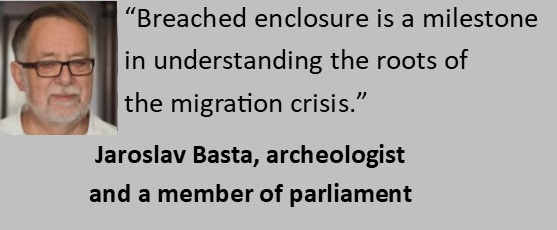The authors of the new French manifesto for the preservation of Western civilization demand, among other things, artificial insemination for lesbians and single women. It reeks of desperation. We want children who are ethnically authentically French, so we’ll take anything. But it will also reinforce the patterns of behaviour that lead people to opt for childlessness. What do we do about it?
Not just despair. In the background, we also feel the embarrassment that the old model of family is gone (and non-renewable) and we don’t yet see the new one clearly. We cannot consider the phantasmagoria of the “rainbow family” as a new model. So what model of family are we moving towards? My guess is that marriage in the next generation will contain more emotion, more eroticism, more mutual emotional support, but will be less stable. People will be happier in marriage than previous generations were, but they will pay the price in short-termism. They will realize that marriage doesn’t have to be for life. They will still spend longer together than it was for their grandparents “until death do us part.” More financial independence. But at the same time, hopefully they’ll be able to make a commitment at least enough to provide a stable environment for their children into their teenage years (which, given their increasing life expectancy, isn’t really worth mentioning). And we probably have to expect that a much larger part of the cost of childcare will be borne by society (meaning the government, meaning the taxpayer).
The old family not only provided a framework for sex and childbearing, but was above all an institution for the protection of family property.
If I say the old model is irretrievably gone, when was the golden days of the traditional family? In the Czech lands between 1950 and 1985, i.e. during the communist era. But in Western Europe they didn’t have communists and those were the best years for the family too.
This is contrary to the fact that we are accustomed to believe that a proper stable traditional family is a kind of ancient thing. But the statistics are clear. And it is logical. The old family not only provided a framework for sex and childbearing, but was above all an institution for the protection of family property. But the vast majority of the population was poor. So they chose to live without long-term partnerships (with regular use of very cheap and widely available prostitution) or to live in an institution that suited them only partially. It worked in wealthy families, it’s just that the relationships there were more like what we experience in companies today than what we might expect from marriage.
As late as the 1920s, it was the case that more than a quarter of people never married in their lifetime.
As late as the 1920s, it was the case that more than a quarter of people never married in their lifetime. It was not until the twentieth century that institutions such as the ‘lion’s-mouth’ and ‘concubinage’, which had previously shaped the lives of a substantial proportion of the population, disappeared.
It was not until the post-war economic growth and massive redistribution that everyone could afford to marry. Moreover, there was a period in the Czech lands when property was easily expropriated and relationships became the real wealth. Together with state support (both financial and moral), this created ideal conditions for the mass development of marriage as an institution. Interestingly, those ideal times were accompanied by a constant notion of decline.


